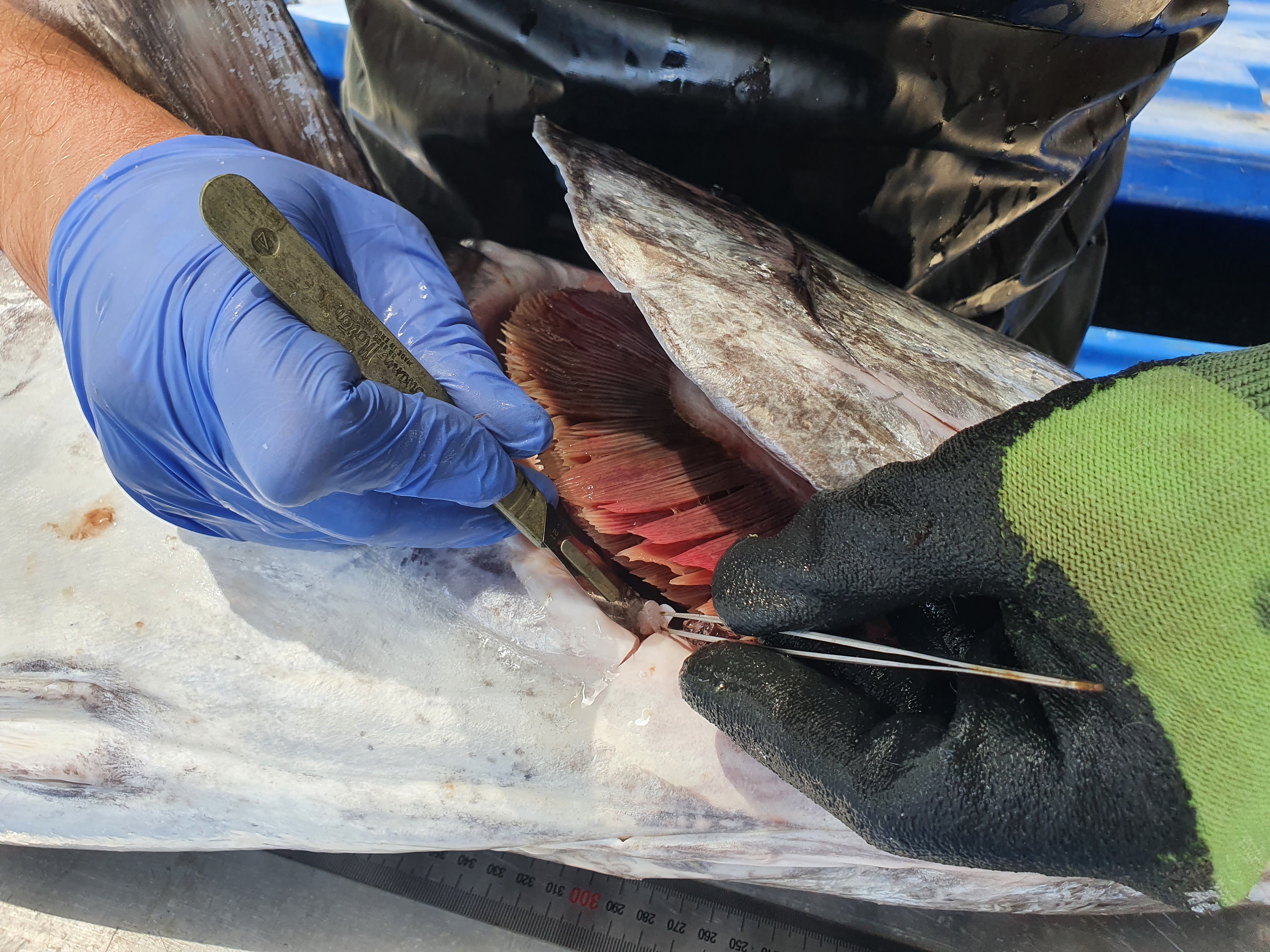Commercial and recreational fishers, as well as seafood processors, have joined forces with researchers to collect DNA samples from Spanish Mackerel (Scomberomorus commerson).
Caught along more than 3,000 kilometres of coastline, this collection is part of a four-year research project co-funded by FRDC and Queensland’s Department of Agriculture and Fisheries (QDAF) (2021-111).
This project investigates the feasibility of a technique called Close-Kin-Mark-Recapture (CKMR) for estimating absolute abundance of the Queensland East Coast Spanish Mackerel stock.
CSIRO researchers, with funding provided by FRDC, developed CKMR more than a decade ago to successfully assess stocks of the highly migratory southern bluefin tuna. The technique is based on the principle that the more pairs of closely related fish found in each number of samples collected, the smaller the overall population is.
What is close-kin mark-recapture (CKMR)?
Estimating the abundance of wild populations is crucial for sustainable management of biological resources, including fisheries. CKMR is an alternative method for estimating abundance (and other demographic parameters such as survival rates and reproductive output), using kinship relationships determined from genetic samples. This technique is used to infer population demographics by identifying close-kin-pairs (parent-offspring or half-siblings) amongst a collection of sampled animals. It is currently used to successfully manage Southern Bluefin Tuna (FRDC project 2007-034; 2016-044). This work has been more recently extended to sharks (2014-024; 2021-015; 2023-068) and Spanish Mackerel (2021-111). |
The CKMR technique is now being trialled on several other species, including Spanish mackerel, to assess stocks independently of commercial fishing catch data.
At the halfway point in the project’s three-year sampling period, close to 4,000 samples have been gathered from across the east coast fishery, which stretches from Cape York to mid-New South Wales.
Lead researcher Dr Jonathan Mitchell at QDAF says both commercial and recreational fishers are supporting the research, which aims to improve the accuracy of information that informs stock assessments and to boost confidence in the process.

This follows a 2021 stock assessment, commissioned and conducted by the Queensland Department of Agriculture and Fisheries (QDAF), that showed the east coast population of Spanish mackerel had declined to approximately 17 per cent of unfished levels. The stock is classified as ‘depleted’ in the Status of Australian Fish Stocks Reports (SAFS). In response to the stock assessment, the Queensland Government reduced commercial quotas and recreational bag limits and introduced northern and southern seasonal closures.
Spanish Mackerel is an important commercial species in Queensland. The state accounts for more than 90 per cent of Spanish mackerel caught nationally, with the total catch valued at $18.6 million in 2021–22. The species is a staple of the state’s seafood sector and take-away outlets, and a popular catch among recreational fishers.
Filling data gaps
Another component of the project is investigating how environmental variables, including ocean temperatures, currents, climate drivers and major weather events, affect the recruitment success of the east coast population. Preliminary analyses suggest sea surface temperature and rainfall patterns can affect the success of Spanish Mackerel recruitment.
Satellite tags will be attached to 30 fish as part of the project to track their movement, with 23 tags already deployed. Preliminary data from the tags shows that more than half of the tagged fish survived the tagging and release process, with some others being eaten by sharks not long after release.

The research team is trialling different handling and release techniques which will help to inform how survival of released fish could be maximised by recreational fishers.
Jonathan says the tags are also producing valuable data about the movement of Spanish Mackerel, with one fish travelling 127 kilometres in four days.
Shark depredation
The project is also investigating shark depredation of hooked fish. With support from commercial and recreational fishers, data from 70 fishing trips has been logged. On some trips, there was no depredation, but on other trips more than 50 per cent of the catch was reported taken by sharks.
“It is important to collect data across many trips to determine the average proportion of catch being lost across the fishery, so this mortality can be accurately accounted for in the next stock assessment,” explains Jonathan.
The main shark species identified are Bull Shark (Carcharhinus leucas) and Pigeye Shark (Carcharhinus amboinensis).
FRDC Research Program Manager Dr Carolyn Stewardson says this FRDC-funded Spanish Mackerel project will collect the best possible information to refine and improve stock assessments as well as informing the Status of Australian Fish Stocks.
“The project highlights excellent collaboration between Queensland and New South Wales to ensure that the necessary science is being provided to inform decision-making about the east coast stock,” Carolyn says.
Related FRDC Project
2021-111: Addressing the uncertainties in the assessment and management of Queensland east coast Spanish Mackerel





